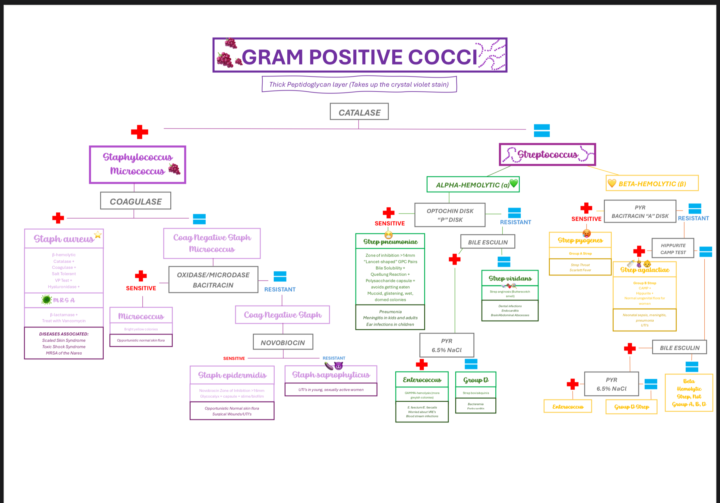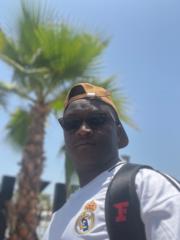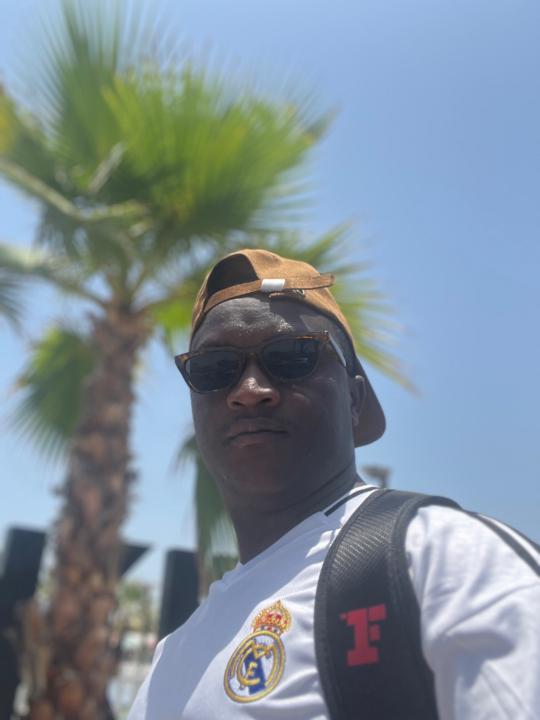Activity
Mon
Wed
Fri
Sun
Oct
Nov
Dec
Jan
Feb
Mar
Apr
May
Jun
Jul
Aug
Sep
What is this?
Less
More
Memberships
Microscope Views (FREE)
1k members • Free
6 contributions to Microscope Views (FREE)
📚 FREE RESOURCE DROP — MLS Review Book by Robert Harr
Hellooooo my little Gang of Nasties!😈😜 If you’ve been feeling overwhelmed about where to even start with studying for the ASCP exam — don’t trip. I got you. This is one of the most widely used study resources out there AND single handedly the reason why I passed my MLS(ASCP) exam: The Medical Laboratory Science Review Book by Robert Harr (PDF version). 🧪 It’s packed with: - Review questions by subject - High-yield explanations - Content that closely mirrors what you’ll see on the ASCP exam (Both MLS and MLT) 📌 Use it to: - Track weak areas - Practice daily questions - Get used to ASCP-style phrasing (yes, the ones that feel like they’re intentionally tryna trick you 😭) Whether you’re just starting or reviewing one section at a time — this belongs in your toolkit. 🔗 Download it here AND BOOKMARK IT on your phone and other devices! https://samicrobiology.wordpress.com/wp-content/uploads/2019/01/mls-review.pdf ✅ Already feeling stuck? Or not sure how to use this resource effectively? Book a 1:1 call with me and I’ll help you map out a study plan that works for your schedule, learning style, and brain. 📅 https://calendly.com/microscopeviewsyt/45min Let’s get YOU ALL certified. We not doing this alone. 💪🏾🧬
Chemistry Made A LOT Easier and Digestible😋🧪⚗️
Greetings my Little Gang of Nasties 😈😜 Let’s talk about one of the most intimidating sections on the ASCP exam: Chemistry. Well…. I mean all of them are intimidating LMAO! The good news? If you break it down into 4 major content areas and attack them piece by piece, it becomes SIGNIFICANTLY more manageable. Before you begin studying ASCP questions, you should know that each sections tests for Biochemical Theory and Physiology, Test Procedures, Result Correlations and Disease Correlations: 🧪What *exactly* is BIOCHEMICAL THEORY? This is the science behind the molecules you’re testing: - The chemical structure and function of carbohydrates, lipids, proteins, and nucleic acids. - The pathways they move through (e.g., glycolysis, lipid metabolism, protein catabolism). - The reactions enzymes catalyze and how those reactions are measured in the lab. - How different compounds (like bilirubin, cholesterol, glucose) behave in the body and in assays. 👉🏽Basically: “What is this molecule, what does it do, and what happens chemically when we measure it?” 📚 Why this is SUPER HIGH YIELD AND IMPORTANT for the ASCP The ASCP doesn’t just want you to memorize test names. They want you to connect the dots: - Biochemical theory = how the test works (the principle behind the method). - Physiology = why we’re testing it (what’s happening in the patient’s body). - Together = interpret results in the context of disease. For example: - Glucose: Biochemical theory = measured via glucose oxidase method. Physiology = regulated by insulin/glucagon. In diabetes, failure of regulation = high glucose. - AST/ALT: Biochemical theory = enzymatic activity measured with substrate assays. Physiology = normally found inside liver cells. In hepatitis, cells die → enzymes leak into blood. 👉🏽 So when you see “biochemical theory and physiology” on a content outline, read it as: “Understand both how the test works chemically AND why it matters biologically.” 🧪What *exactly* is PHYSIOLOGY?
Microbiology Study Tip: Breakdown Bacteriology, Mycology & Parasitology
Greetings My Little Gang of Nasties! @Tyneatrious King Posed a great question in the group. Since Microbiology is a huge subject, and the smartest way to study is to break it into major categories and then master the distinguishing features of each. Here’s how I’d suggest you prepare on top of utilizing using MediaLab/LabCE or the ASCP BOC Exam Simulator questions to reinforce the theory: 🦠🧫🧪 BACTERIOLOGY Focus Areas: - Gram-positive vs Gram-negative (cell wall structure, staining, antibiotic susceptibility) - Morphology (cocci vs. bacilli) - Biochemical reactions (Catalase, coagulase, oxidase, TSI, etc.) - Pathogenic mechanisms (toxins, virulence factors) - Clinically important bacteria (Staphylococcus, Streptococcus, Enterobacteriaceae, Non-Fermentative Bacilli, Mycobacteria, etc.) Study Tips: - Master the Gram stain flow chart. - Learn “differentiating tests:” the one test that separates similar bugs (e.g., catalase for Staph vs Strep, coagulase for S. aureus vs coagulase negative staph). - Practice with TSI and other biochemical slants until interpretation is second nature. 🍄 🍄🟫🥐🥖🍞 MYCOLOGY Focus Areas: - Yeasts vs molds vs dimorphic fungi - Microscopic morphology (hyphae, spores, budding patterns) - Fungal culture characteristics (agars, colors, specific characteristics on the plate) - Clinically relevant fungi (Candida, Cryptococcus, Aspergillus, Histoplasma, Blastomyces, Coccidioides, etc.) - Stains (India ink, KOH prep, silver stain) Study Tips: - Compare systemic dimorphic fungi side-by-side (location, morphology, diseases). - Use flashcards with images of fungal structures, the ASCP is often image-heavy! - Group fungi by disease type: superficial (tinea), subcutaneous (sporotrichosis), systemic (Histoplasma), opportunistic (Candida, Aspergillus). 🦟🪲🪳🕷️ PARASITOLOGY Focus Areas: - Protozoa vs helminths - Life cycles (hosts, vectors, transmission)*** INCREDIBLY IMPORTANT - Common parasites and their disease states (Giardia, Plasmodium, Toxoplasma, Entamoeba, Ascaris, Strongyloides, Schistosoma, etc.) - Lab ID (ova, trophozoites, cysts in stool; blood smears for malaria; serology - Again, ASCP is IMAGE HEAVY)
Microbiology CHEAT CODES: Flow Charts for Gram-Positives & Gram-Negatives
Greetings my Little Gang of Nasties 😈😜 Today we’re breaking down the basics of Gram-positives vs Gram-negatives in Microbiology. Attached, you’ll find two flow charts: use these as much as you can when answering your practice questions. The more you use them, the faster it’ll become second nature when you see those bacteria show up on your exam. 🦠 Gram-Positives (Purple!) • Cell wall: Thick peptidoglycan layer → holds onto crystal violet stain. • Examples: Staphylococcus, Streptococcus, Bacillus, Clostridium, Listeria. • Biochemicals you’ll use a lot: Catalase, Coagulase, Hemolysis patterns, Bile esculin, 6.5% NaCl, Optochin & bacitracin sensitivity 👉 TSI Slant for Gram-Positive Rods (like Bacillus or Listeria): usually A/A (acid slant/acid butt), but Clostridium can be variable depending on species. 🦠 Gram-Negatives (Lactose and Non-Lactose Fermenters) • Cell wall: Thin peptidoglycan layer + outer membrane with LPS. • Examples: Enterobacteriaceae (E. coli, Salmonella, Shigella, Klebsiella), Pseudomonas, Neisseria, etc. • Biochemicals to remember: Oxidase, Indole, Urease, Citrate, H2S production. 👉 TSI Slant for Gram-Negative Rods: • E. coli: A/A (acid slant/acid butt), gas, no H2S • Salmonella: K/A (alkaline slant/acid butt), H2S positive • Shigella: K/A, no H2S • Klebsiella: A/A, gas • Pseudomonas: K/K (alkaline slant/alkaline butt) = non-fermenter 🔑 Tip: Your flow charts and TSI reactions are your cheat codes. Use them over and over until you don’t even need to think… you’ll just know the answer. Now go run through some practice questions using the charts. The more you do, the more this sticks, and the faster you’ll dominate your exam. -Marilyn 🧪✨ Interested in studying with other students for your ASCP exam? Weekly study session available in the Inner Circle of Microscope Views. Click here to join now, or book a 1:1 call with me to assess your needs! https://www.skool.com/microscopeviews/about?ref=badbb26c40a147eea94634972a25414a

🩸CBC Crash Course: What You REALLY Need To Know For The ASCP
Greetings my Little Gang of Nasties😜😈 The Complete Blood Count (CBC) is one of the most common lab tests you’ll see, and it’s PACKED with useful info. Here’s a quick breakdown of the key components and how to think about them: 🩸WBC: White Blood Cell Count Literal count of all white blood cells in circulation. 🩸RBC: Red Blood Cell Count Literal count of all red blood cells in circulation. 🩸HGB: Hemoglobin Oxygen-carrying protein in RBCs. Low in anemia, high in chronic heart/lung disease. 🩸HCT: Hematocrit % of your blood made up of RBCs. Low = anemia High = dehydration, polycythemia 🩸MCV: Mean Corpuscular Volume Average size of RBCs. - Microcytic (< 80 fL) - iron deficiency, thalassemia - Normocytic (80–100 fL) - acute blood loss, chronic disease - Macrocytic (> 100 fL) - B12/folate deficiency, liver disease 🩸MCH: Mean Corpuscular Hemoglobin Average amount of HGB in ONE RBC. 🩸MCHC: Mean Corpuscular Hemoglobin Concentration Average concentration of HGB in ALL RBCs. Hypochromia if < 32 g/dL (iron deficiency anemia, thalassemia) 🩸RDW: Red Cell Distribution Width Variation in RBC size. >16% think anisocytosis (often means bone marrow is working hard, useful in anemia diagnosis) 🩸 PLT: Platelet Count Number of platelets in circulation. Low = bleeding risk High = inflammation, iron deficiency, post-surgery 🩸MPV: Mean Platelet Volume Average size of platelets. Big = younger platelets (bone marrow active) Small = older/fragmented platelets 💡 Study Tip: When reviewing CBC results for the ASCP, don’t just memorize definitions, practice linking each abnormal value to its possible causes. That’s what will help you crush both questions and real-life cases. Hope this helps a bit - also check out the attached .pdf for a better chart! -Marilyn ✨If you’re still struggling or feel lost with your ASCP Exam prep, let’s get you on track. Book a 1:1 call with me so we can assess your needs! https://calendly.com/microscopeviewsyt/45min
1-6 of 6


